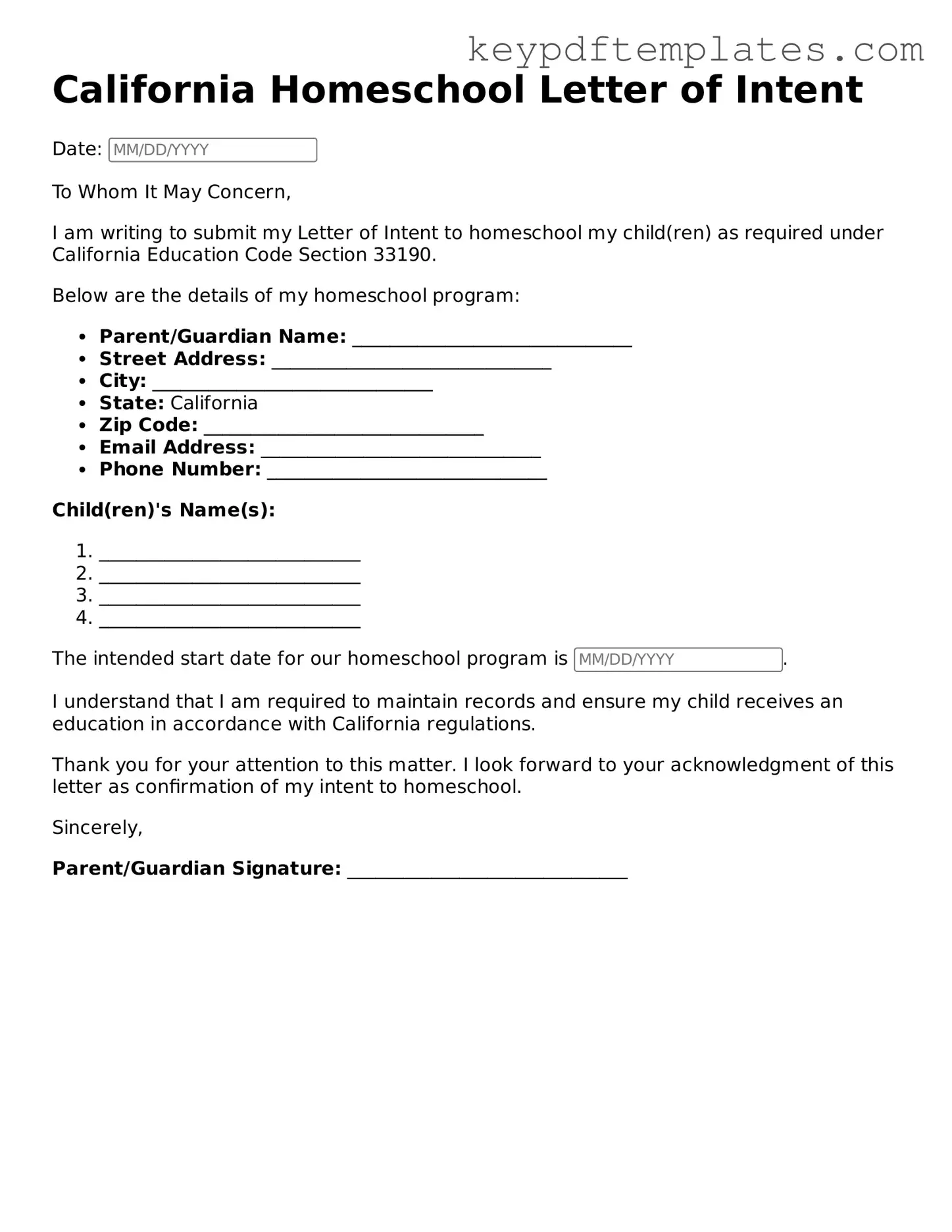Legal Homeschool Letter of Intent Document for the State of California
The California Homeschool Letter of Intent form is a crucial document that parents must submit to officially notify the state of their decision to homeschool their children. This form serves as a formal declaration of intent, ensuring compliance with state education laws. Understanding its requirements and implications is essential for families embarking on the homeschooling journey.
Modify Document Online
